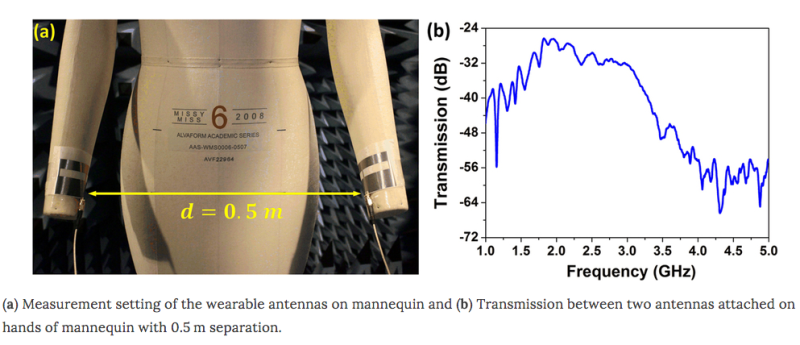Thinner than paper, stronger than diamond, and more conductive than copper, graphene is poised to change the world in a wide array of industries. Among the most exciting applications for graphene will be its use in advancing wearable technology.
Recent breakthroughs by scientists at the University of Manchester have demonstrated how low cost, flexible graphene wearable devices will be embedded into clothing and even skin in the near future. The report, published in Scientific Reports, emphasizes graphene’s amazing flexibility and electric conductivity as the primary factors that will lead this charge into the future of wearable tech.
Lead researcher Dr. Zhirun Hu from the School of Electrical and Electronic Engineering called the breakthrough a significant step forward: ““We can expect to see a truly all graphene enabled wireless wearable communications system in the near future.”
Dr. Hu’s team used printed graphene to build transmission lines and antenna, which they then connected to the arms of a mannequin. Testing mobile and Wifi connectivity in different communication devices, they found that the devices were able to ‘talk’ to each other, thereby creating an on-body communications system. This could have huge potential for health care applications such as monitoring vital signs.

With graphene’s extreme thinness and flexibility, we can expect to see “smart-skin” applications, in which adhesives embedded with graphene will monitor various health statistics. We’ll likely see fitness wearables move into this skin realm, as well.
This exciting research demonstrates how we’ll soon be using printed graphene to do the work of RF signal transmitting, radiating and receiving, which forms the basis of wireless wearables. Because graphene can be printed at low temperatures, it remains compatible with heat-sensitive flexible materials. These attributes open up major design potential for wearables, which have previously been hampered by bulky interfaces and inflexible batteries.
Graphene’s amazing properties continue to find exciting new applications thanks to the ingenuity of scientists like Dr. Hu’s team at the University of Manchester. Once graphene is successfully implemented in wearable tech devices, its value will only continue to skyrocket.

